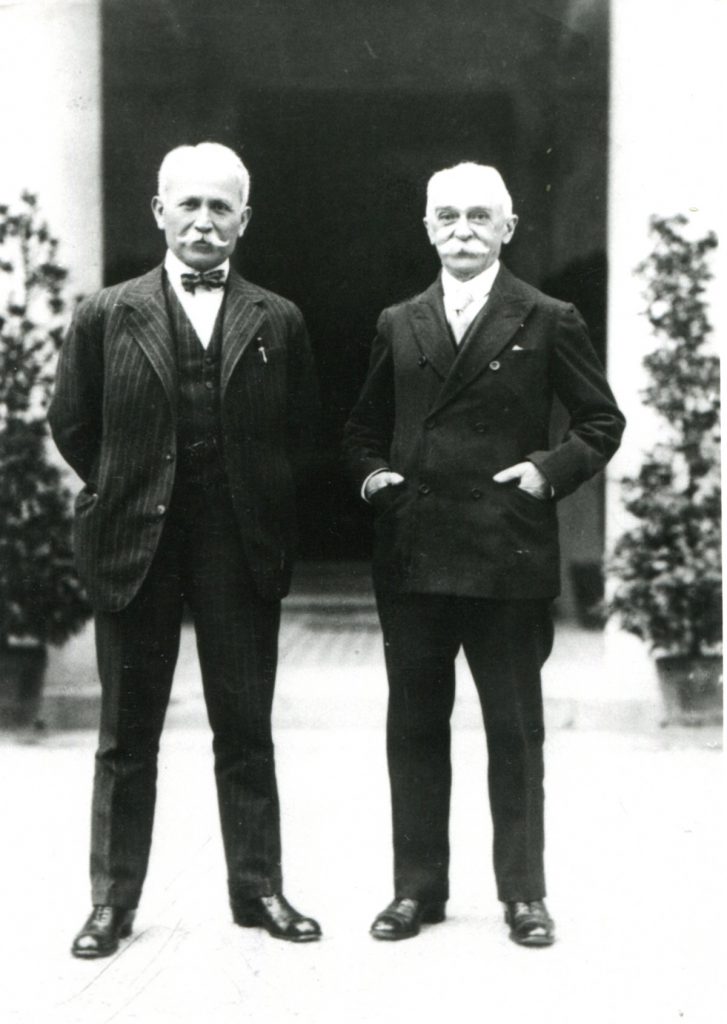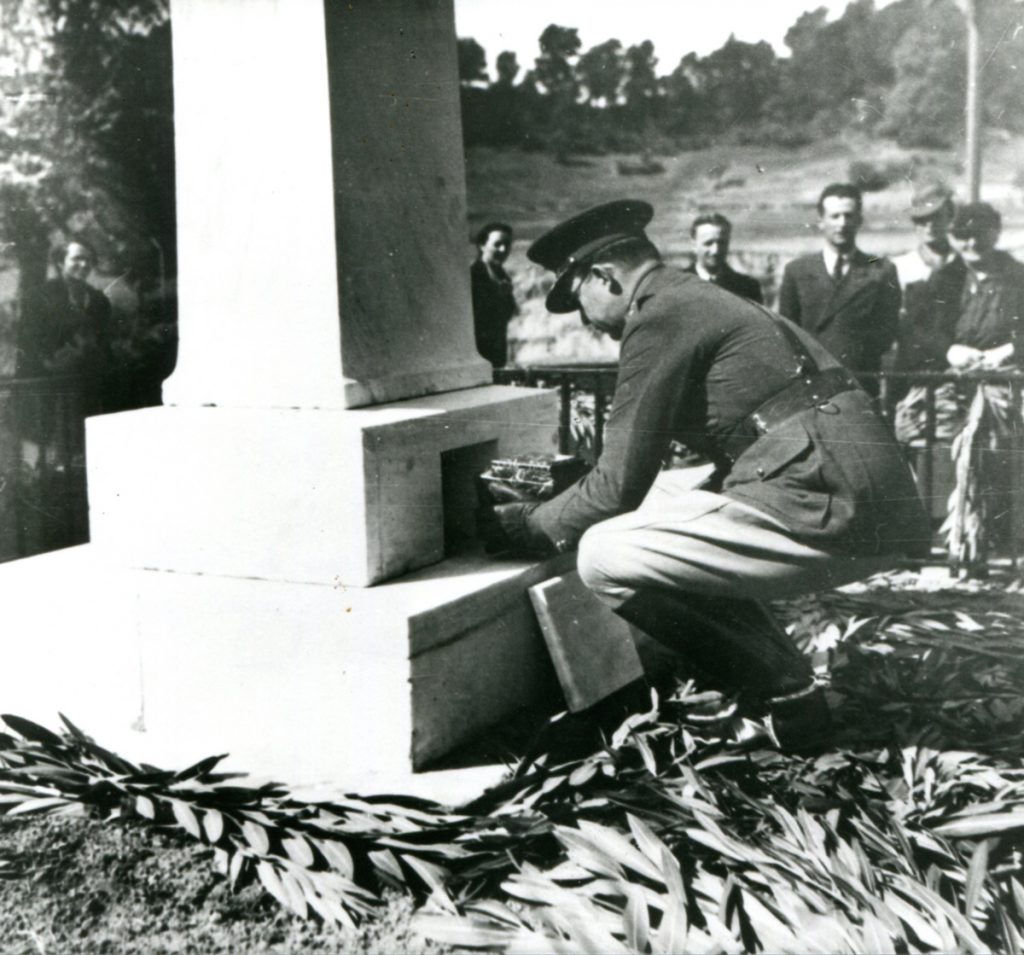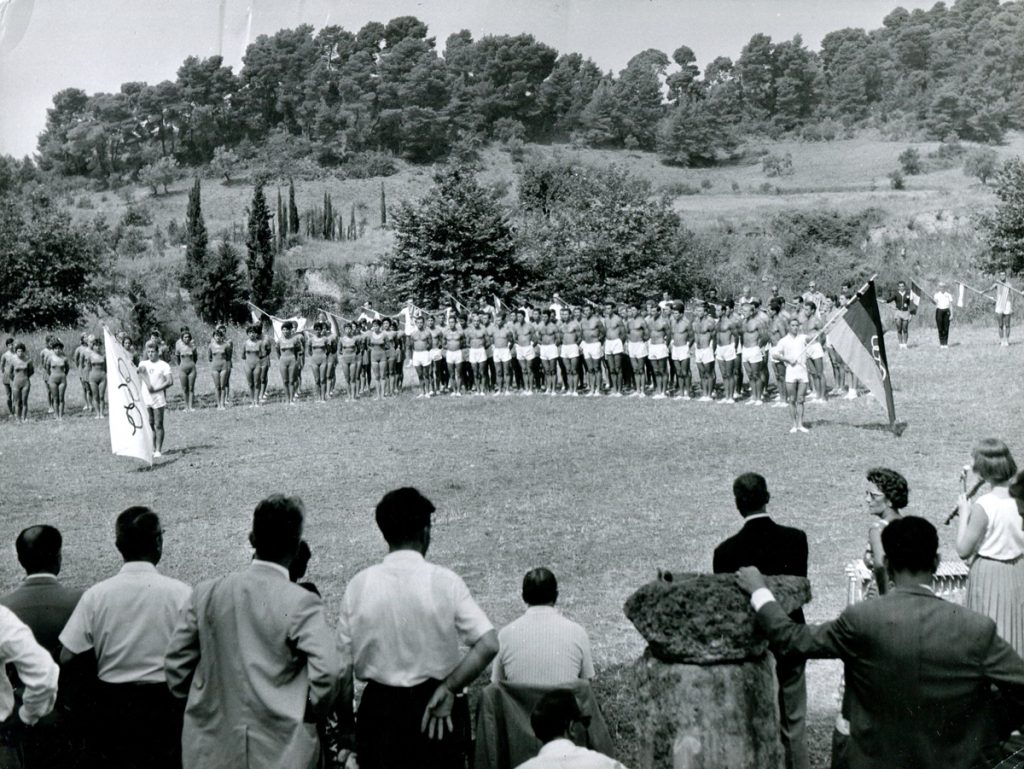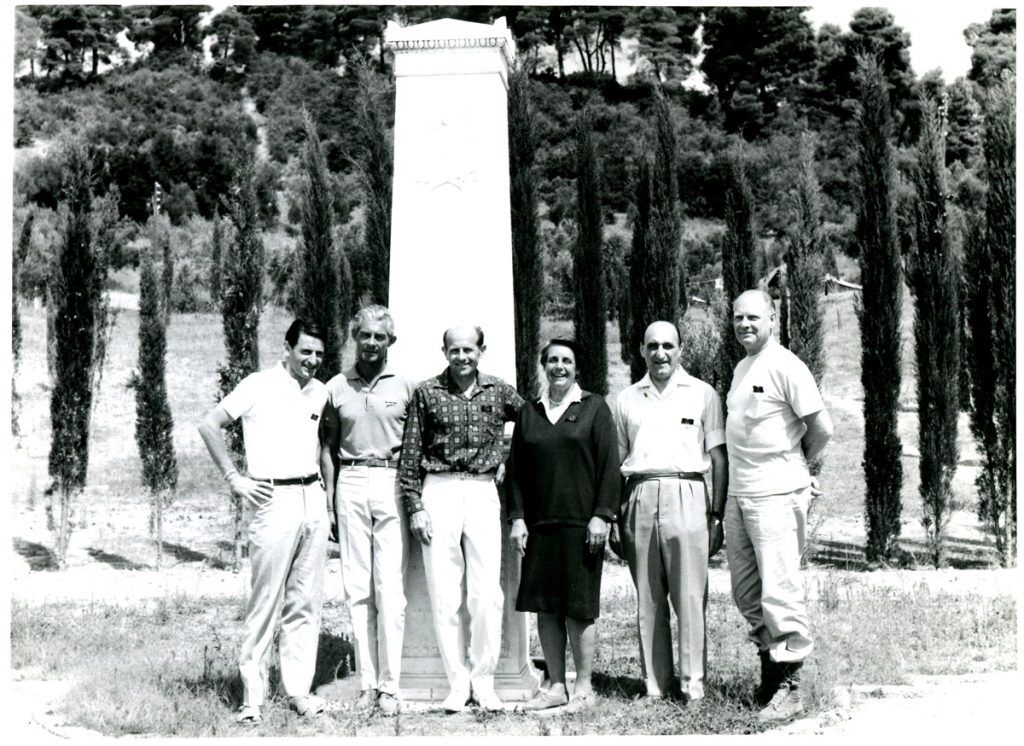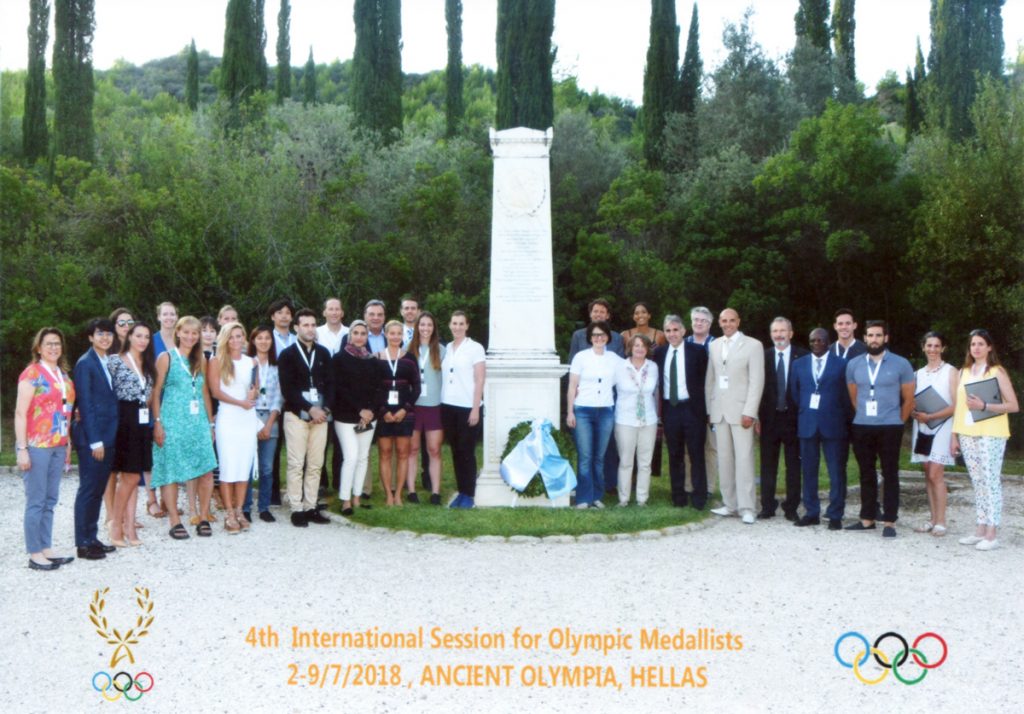International Olympic Academy
Stephan Wassong
In 1927 Pierre de Coubertin returned to Olympia after an absence of 31 years. The reason for his journey was the unveiling of a commemorative stele set up at the entrance of the altis to honour him as the founder of the modern Olympic Movement. At that time the idea of establishing a permanent school of Olympism in Olympia was born. It was discussed between Coubertin and his friend, Ioannis Chrysafis, who was the then chair of the Department of Physical Education at the University of Athens. Before that the Hellenic Olympic Committee (HOC) had developed plans to establish a model of the ancient gymnasium for teaching and discussing the importance of sport as a tool for value training and for organizing a copy of the ancient Olympic Games. As the latter one seemed to be unrealistic, the idea of the educational center found correspondence on the plans of Coubertin and Chrysafis. But these could not be pursued due to the death of Chrysafis in 1930.
Coubertin and Chrysafis.
Navacelle Collection
The idea was revived and fuelled with a new momentum in 1938, and again in Olympia, but this time the occasion was sad as Coubertin`s heart was embedded in the 1927 erected stele in the presence of members of the International Olympic Committee (IOC). In his last will, Coubertin reiterated the importance of the ancient Olympics and their sport venues on his idea of reintroducing the Olympic Games. The consideration of these words in connection with the start of the excavation activities of the ancient stadium in 1937 was a worthy occasion for Carl Diem and Ioannis Ketseas to reflect again on the founding of an Olympic Academy. Diem and Ketsas, who was a former student of Chrysafis and the then secretary general of the HOC, were connected by the bonds of friendship and had collaborated already in the planning and organisation of the first torch relay from Olympia to Berlin in 1936.
Embedment of Coubertin`s heart.
Navacelle Collection
By 1938 Diem and Ketseas elaborated a plan on the establishment of an academic institution which they named International Olympic Academy (IOA). The HOC adopted the plan and put the realization on its working agenda. The members of the IOC were informed about this project on its 38th Session in Cairo and finally approved it on its 39th Session in London in 1939. Due to the Second World War the initiative to establish the IOA could not be developed. Four years after the war`s end, the IOC decided to reinitiate the project at its 44th Session in Rome in 1949. But due to financial constraints on the HOC and many National Olympic Committees (NOCs) to dispatch members to Olympia for planned courses, the IOA could not open until 1961.
The first course at the IOA took place from 13th to 30th June 1961. The official opening was scheduled for the 22nd June. The date was chosen on purpose because that day coincided with the official completion of the excavation work on the ancient stadium and the festive transfer of the stadium to the Greek government. This was also the reason for the presence of Avery Brundage, the then IOC President, and IOC members. After the closing of the IOC Session in Athens on 21st June the delegation of the IOC had travelled to Olympia. The festive protocol had to change due to storms and heavy rain-fall. The ceremonial address by the Swiss cultural historian Carl Jakob Burckhardt could not be held in the ancient stadium and had to be held in the main hall of the museum, located above the altis. The planned gymnastic performances and dancing presentations of 80 German and 80 Greek students of sport had to be postponed for one day. They could not be performed in the ancient stadium, which was still wet but had to be held in the ancient gymnasium.
Ceremony for the opening of the ancient Olympic stadium; 23rd June 1961
Archive of the Olympic Studies Centre of the German Sport University Cologne
The first course at the IOA, which was attended by 31 official participants from 24 NOCs, was considered so successful that the HOC decided on continuing the IOA with annual sessions. Since then the courses and respective sessions for various target groups have been enjoying a long and impressive tradition, and continue until today. In 1964 a festive element was added to the courses and sessions which has been launched by the transfer of the Coubertin stele from the entrance of the altis to a grove on the academy site. At the beginning of each session a wreath is laid down at the Coubertin stele. The same is done at the memorial stone which was set up for Diem and Ketseas who passed away in 1962 and 1965 respectively.
Coubertin memorial site at the International Olympic Academy.
Archive of the Olympic Studies Centre of the German Sport University Cologne
Pictured here (left to right): Jean Durry, Prince George William of Hanover, Emil Zatopek, Liselott Diem, Henri Pouret and Johann W. Westerhoff, 1966.
Without doubt, the establishment of the IOA was not a direct initiative of Coubertin. But a premature vision of it was always part of his thinking as an educator who wanted to disseminate the value of Olympism for sport and society. The IOA must be viewed as an educational legacy of Coubertin and his continuing endeavour for promoting Olympism. That is the reason for having written this entry.


